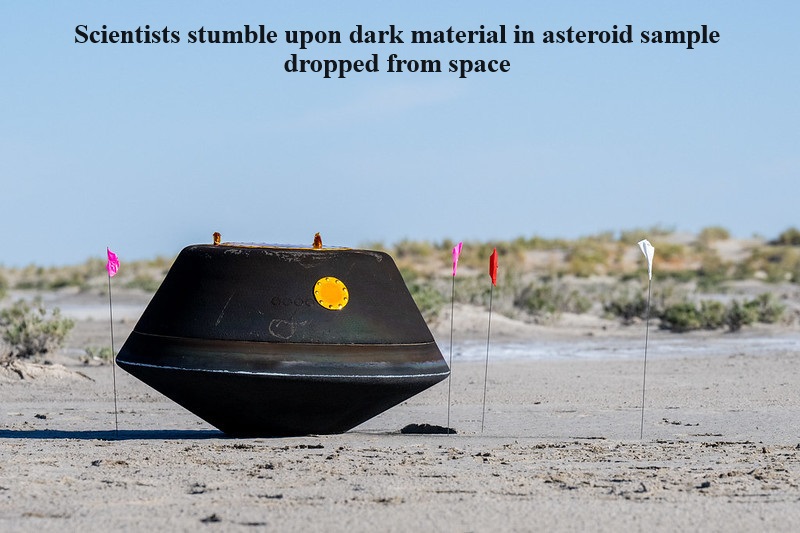
Upon examining the first look at the sample from the near-Earth asteroid Bennu, scientists were surprised to find an abundance of dark, fine-grained material on the interior of the container’s base and lid. This unexpected debris is likely to provide valuable information about the asteroid even before the primary sample is analyzed.
The historic landing of the sample occurred on September 24 in the Utah desert, marking the culmination of NASA’s 7-year OSIRIS-REx mission. This mission involved traveling from Earth to asteroid Bennu, touching down on the asteroid’s surface, collecting samples, and returning the sample to Earth.
The canister containing the sample was swiftly transported by the mission team to NASA’s Johnson Space Center in Houston, where a dedicated clean room was prepared for the analysis of this cosmic sample.
The sample from Bennu has the potential to unravel mysteries of the universe. Asteroids like Bennu are remnants of the early solar system, providing insights into the conditions and processes that led to the formation of planets. Understanding the orbits and composition of near-Earth asteroids is crucial for planetary defense, as it enables scientists to develop strategies for deflecting any space rocks on a collision course with Earth.
During the OSIRIS-REx mission, the Touch-and-Go Sample Acquisition Mechanism (TAGSAM) head was employed to briefly disturb the surface of asteroid Bennu and collect a sample in October 2020. This process was so successful that it gathered an abundance of materials, with particles even observed drifting slowly into space before the TAGSAM head was secured inside the canister.

Post Your Comments